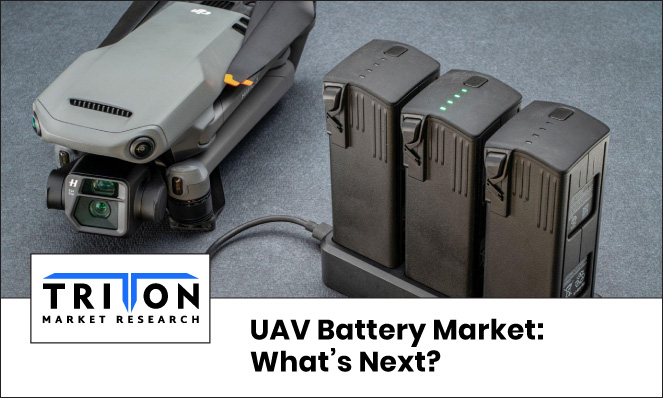



16, September 2022

In 2020, the total global consumer UAV or drone shipment was around 5 million units. Estimates suggest this number to reach around 9.6 million units by 2030. Despite the demand, UAVs tend to face short travel range issues, which has elevated the demand for robust electrical protection systems. Subsequently, the increased demand for lithium-ion, fuel cells, and nickel batteries is widening the scope of the UAV battery market globally.
In recent years, battery technologies such as fuel cells have gained momentum with benefits like greater energy density that enables superior control and stability during movement. Doosan’s DS30 drones powered by a 2.6 kW fuel cell is one such example having four to five times the higher energy density than other batteries.
As per industry sources, the battery market has witnessed tremendous technological developments in recent years. This has pushed the production and deployment of UAV batteries, influencing the studied market to evolve at 17.46% between 2022 and 2028.
Military investments and government support for drone technology have soared immensely, elevating UAV battery stocks. In line with this, operating players are streamlining their portfolios regarding components and affordability. This growth is majorly observed in North America and Asia-Pacific.
The Asia-Pacific UAV battery market is expected to witness the fastest growth at a CAGR of 18.01% due to rising investments in battery R&D and defense budgets, such as:
Such government measures have sored demand for lithium-based batteries, which leads the market in terms of product type. Their role in supporting long cycle life and energy efficiency in UAVs propels the segment’s growth. Hence, companies like Shenzhen Grepow Battery are launching high-technology lithium batteries to gain a competitive edge in the market.
However, geographically, North America UAV battery backs the highest position in 2021, with a CAGR of 17.54%. This growth is attributable to increasing military funding, with the United States accounting for a major share. For instance:
Commercial, consumer, and industry verticals are key categories supporting the market’s growth. Among these, Defense, government, & law enforcement secures the majority of shares in the industry vertical segment. The high demand in the sector has guided companies like Boeing to develop drones like MQ-25 Stingray aerial refueling. In 2021, the drone completed carrier-based testing. And in early 2022, it became the first drone to refuel a Boeing F/A-18 Super Hornet. As a result, prominent players like General Atomics Aeronautical and AeroVironment Inc have integrated new technologies to develop high-endurance batteries, thereby creating opportunities for the UAV battery market.
Over the last few years, the commercial application of drones has expanded from photography to monitoring agricultural land, paving the path for smart operations. Their adoption in the e-commerce sector is also expected to soar over the near future. Companies like Amazon are fueling the adoption with the launch of Prime Air Fixed-wing Drones for delivery purposes. Although the market is projected to strengthen, it faces certain challenges such as:
Nevertheless, the ongoing expansion in industries and capitalization from geographies are projected to create prospects for the UAV battery market over the forecast period.

Prevalent cases of terrorist attacks in today’s world is increasing the need for severe standards of security for public safety, and the global market for biometric technology scrupulously accommoda..
Prevalent cases of terrorist attacks in today’s world is increasing the need for..